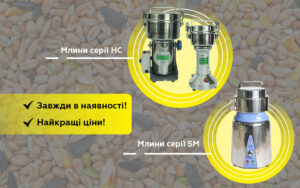The Key Differences Between Automatic & Manual Transmission Oils
Transmission oils have become one of the most important components of the automobile industry. It keeps the transmission system smooth and efficient; if not, the system would wear out quite quickly. Yes, both automatic and manual transmissions do have oils, but they differ. The reason is due to the different demands for each system. In this blog, we will take a look at some of those differences. Knowing these differences will help you choose the right oil for your car.
The Basics of Transmission Oil
Transmission oil has two major functions: it lubricates the moving parts in order to reduce friction and wear, and it carries heat away from the transmission and cools it. Both manual and automatic transmissions depend on these duties. However, due to the different designs of these two systems, they both do these duties differently from each other.
How an Automatic Transmission Works
An automatic transmission is way more complex compared to a manual one. In an automatic transmission, the gears switch with the help of a hydraulic system, but it does not require any contribution from the driver. This fluid pressure system depends on transmission oil, known as automatic transmission fluid, or ATF.
ATF not only lubricates but also cools and cleans the transmission by carrying dirt and debris within the suspension. Thus, due to its multi-functionality, its specification should have a high degree of specifying value.
How Manual Transmissions Work
Manual transmissions rely on direct mechanical engagement to change gears. This is typically controlled by the driver with a clutch and a gear shifter. In this case, the action of the oil is simple lubrication of gears and bearings to reduce wear. The main goal of MTF is to reduce heat produced due to friction. Manual transmission oil does not have to create hydraulic pressure. Instead, it focuses on protection and lubrication. Such a difference in function affects its composition.
Automatic Transmission Fluid Composition
ATF is quite a specialized fluid. It has base oils, additives, and modifiers that ensure it plays all its roles. The bulk of ATF is composed of base oils. They play the main lubrication and cooling functions.
Additives give the properties to ATF. Anti-foaming agents prevent air bubble formation under pressure. Friction modifiers ensure smooth gear shifting. Detergents and dispersants ensure the system stays clean by suspending dirt and preventing deposits. Automatic systems also generate high heat. To combat this, ATF contains thermal stabilizers. These keep the oil effective even at extreme temperatures.
Composition of Manual Transmission Oil
Manual transmission oil has less intricacy in formulation since it is made for strong lubrication and protection, which the base oil basically does. The additives are different compared to ATF.
The common additives in most manual transmission oils include anti-wear agents, and these protect the wear on gears and bearings when operational. EP additives are also common. These allow the oil to handle pressures that are high between gear teeth. Unlike ATF, it does not require friction modifiers either. Since its job is to reduce friction rather than control friction for smooth shifts, it requires a different additive balance.
Other Major Differences
Automatic and manual transmission oils differ in many ways. Their compositions reflect the unique demands of their systems. Knowledge of these differences will help you choose the right oil for your car. Proper maintenance ensures smooth performance and a long life for your transmission. Some of the major differences are:
Viscosity Differences
Viscosity is an important characteristic of transmission oil. It refers to its thickness and flow qualities. There is a difference between the viscosities of automatic and manual transmission oils.
ATF is normally thinner. It has good flowability as it retains hydraulic pressure through which the automatic systems run. This oil reduces drag, hence efficiency. Manual transmission oil is always thicker. Its high viscosity provides a strong film that prevents gears from wear and tear under heavy loads. Thickness ensures it remains in its position even during intense pressure.
Heat Tolerance
These oils differ in another respect: that of heat resistance. Automatics generate more heat owing to their hydraulic nature. ATF must resist breakdown from heat. It has thermal stabilizers in its formulation for efficiency retention at high temperatures. Manual transmissions do not generate enough heat, so their oil does not require that much stabilizer. It must still be resistant to oxidation and thickening over a period of time.
Cleaning and Maintenance Properties
ATF contains detergents and dispersants that keep the system clean. These additives clean off dirt and prevent sludge formation. Automatic systems need clean fluid to operate smoothly. Manual transmissions require less cleaning by the oil. Its purpose is long-lasting lubrication, not cleaning up after debris. However, some cleaning agents are added for general cleanliness.
Compatibility with Seals
Transmission oils must not be incompatible with seals and gaskets. In automatics, the seals are more sensitive. ATF contains conditioners for the seals that prevent leaks and retain flexibility. Manual transmission oil has little to be concerned with in the area of seals. Its additives are much more geared toward gear protection rather than maintaining seals. It is a difference that well illustrates the needs of each system.
Why Do These Differences Matter?
The right oil makes all the difference, while the wrong type can cause serious problems. For instance, ATF used in a manual transmission will not provide enough protection for the gears. Manual oil in an automatic system will not create hydraulic pressure responsible for shifting. Each type of oil is designed for its system. Their differences in composition reflect the unique demands of automatic and manual transmissions.
Advances in the Transmission Oils Manufacturing
Modern cars are enjoying the advantage of technological advancements in oil. Synthetic oils have gained popularity in automatic and manual systems. They perform better and longer than conventional oils. Synthetic ATF is better at withstanding heat and oxidation. Its performance is uniform in extreme conditions. Synthetic manual transmission oil provides excellent protection and longer intervals between changes. There are also blends designed for high-performance vehicles. Such oils will serve the needs of sports cars and heavy-duty trucks.














Post Comment